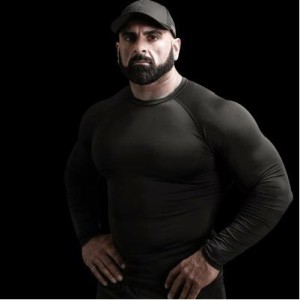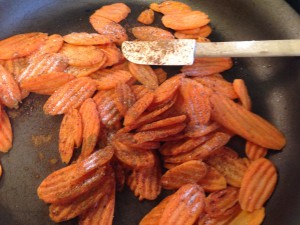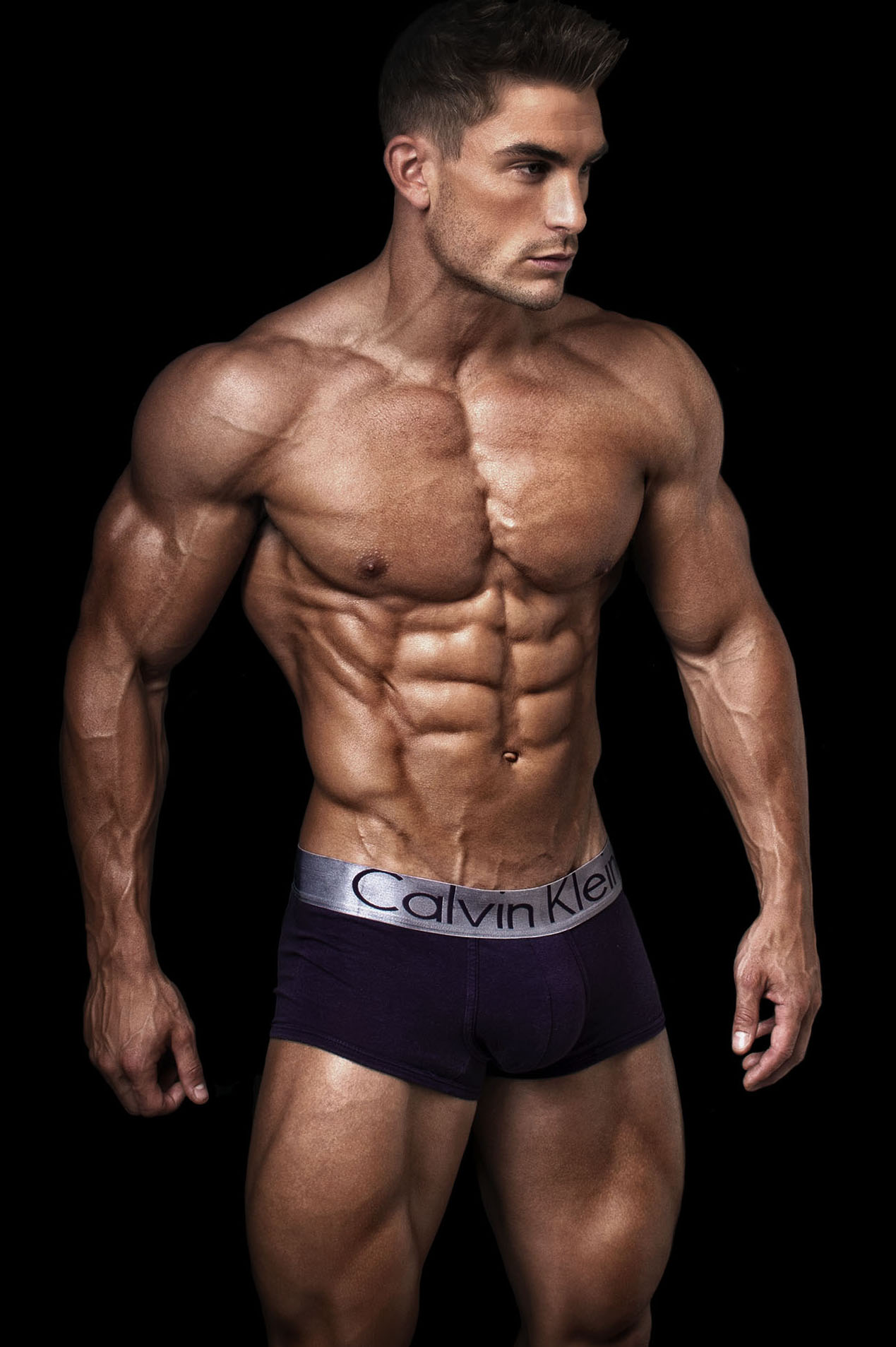Information is cool. But execution is what matters.
If losing fat were as simple as having access to information we’d all be ripped. Especially the dorks arguing on Facebook about when to start drinking their “peri-workout” drink.
Instead, the average gym goer is, well, fat. Or skinny-fat. Or just plain physically shitty, with a cupboard full of lousy supplements and an ass like Donald Trump.
Even most smart “fit” dudes I meet could stand to lose a few. And these bros frustrate me the most.
You learn right away that they know a lot about fat loss – possibly too much – cause they know all the lingo and mention studies they’ve never actually read like the PubMed Rain Man.
But they’re miserable failures at translating all this knowledge into action. At least with the level of focus and consistency that produces results.
My hope is this final post in the series will show how to do just that.
A Recap
My first blog in this fat loss mini-series covered “why” you should get lean. It’s important. Please read it.
The next covered how to eat to lose fat, specifically the 7 Big Rocks of fat loss nutrition.
The last covered training, the most open ended of all. There’s no shortage of exercise programs that will help you lose fat. Just some work better than others.
Read these three posts and you’ll have everything you need to be successful.
Yet most won’t succeed. Because while losing fat and getting in great shape is simple, it’s just not easy.
Poor Success Rate
There are many reasons otherwise smart dudes fail at the fat loss game. Once you eliminate the obvious nonsense – “calories don’t matter; cardio makes you fat” – you’re left with a few standard landmines that demolish even the most knowledgeable lifter.
Anxiety. There’s so much misinformation (and conflicting information) on the web that the average person eventually says “fuck it” and heads for the drive thru.
That’s why some nutrition coaches have their clients “fast” from all fitness media. Until you have the basics on lockdown (calories, consistency, etc) the rest is just background noise distracting you from the truth.
It Takes a Long Time. Fat loss never follows your personal schedule. While deadlines are powerful goal setting devices, your best laid plan to be “ripped by summer” could have you still weighing your broccoli on Labor Day, especially if you’ve never been lean before.
It’s a Grind. While you can (and should) enjoy most of your favorite foods on a diet, at the end of the day, it’s still calorie restriction. It’s still a grind.
No matter how many different ways we to try to dress it up as “loving your lifestyle,” it’s a pain in the ass, especially towards the end. That’s why it’s called a “diet” and not a “lap dance.” There’s always some suffering involved. Most simply can’t handle it for very long.
So how do you put it all together and devise a plan to get the body your really want?
At the risk of being narcissistic (Narcissism? On a personal blog? Never!) I’ll use myself as an example.
The Situation
Back in January I wanted to get in better shape. (Shocking I know. No one ever feels this way on January 1st).
While I looked okay, I knew I was capable of much better.
The Why
So step one was to determine my why. Why should I get lean again? I pulled out a pencil and paper and wrote out the following.
- I’m happier when I’m lean. What can I say, I like veins. And girls like guys with veins. It’s like the circle of life. Except with veins.
- I feel more “complete” as a bodybuilder when I’m lean. Lean bodies are more aesthetically pleasing. Again, that’s just me.
- 90% of my coaching clients are guys wanting to get lean. If I’m going to offer guidance on a subject, I should walk the walk. Not just snark like a know-it-all dork on Facebook.
- I feel healthier when I’m leaner. I have more stamina and my joints are less cranky. My bloodwork is better too.
- I make much better improvements in muscle size when starting lean. This is still my favorite part of dieting down – the subsequent anabolic rebound. Leaner bodies just seem to “grow” better.
That was enough motivation for me. And while I didn’t stare at this list every day, it was always on my mind. That’s a good thing.

The Diet
I cheated a bit here. I consulted with a bodybuilding coach I admire, Jeff Alberts from 3D Muscle Journey. I told Jeff that I wanted to learn more about his approach to flexible dieting, especially considering I’d spent decades as a rather strict “clean eater.”
There was no secret sauce to Jeff’s approach, no voodoo. Just consistent macro tracking, focus, and doing the important things well.
We decided I should be at 2700 calories. His plan for me called for 200 grams of protein, 325 grams of carbs, and 60 grams of fat. I pushed the protein up a bit and the carbs down. Cause I like protein. It doesn’t matter. The calories were the same.
Meal frequency was entirely my discretion, so I stuck with my preferred set up of 3 meals a day, plus 1-2 small snacks.
I always ate an hour or so before lifting weights and within an hour after finishing. I enjoy better workouts that way and perform better. That’s important.
Supplements were the basics – creatine, fish oil, a multi-vitamin, vitamin D3, quality whey protein and/or BCAA’s, and beta alanine. Being a health nut, I worked in a few others I take for cholesterol, sleep, and stress management. Again, nothing fancy, no overpriced fat burners or magic workout drinks.
To keep me on task, whenever I found myself getting too obsessed with trivial details like workout nutrition, meal frequency, or the molecular weight of my carbohydrates, I’d ask myself, “What would Arnold do?”
Unfortunately, the answer was usually “flirt with the chunky waitress at the Waffle House,” so that didn’t always work so well either.
Bottom line, what makes a plan effective is how well you do the stuff that matters and how sustainable it is, not how flashy or cutting edge it is or how many meaningless hoops you can jump through.

The Training
Jeff suggested 4-day upper/lower body split. I opted for a higher volume hypertrophy routine. Both approaches can work, provided there’s a progression model. I just respond better to volume.
As for cardio, Jeff suggested two sessions of low intensity cardio a week. Instead I started at three, and made the “mistake” of listening to podcasts while I did it.
Thanks to the podcasts I really enjoyed it, and saw results quickly — so fast that I escalated to five or six 45-minute sessions per week.
This was a mistake. I eventually plateaued, and adding even more cardio to my schedule was untenable and certainly counterproductive. This forced me to focus entirely on the dieting side of the ledger when things slowed down. And things always slow down.
This is what can happen when you coach yourself — you do dumb shit.
I did enjoy the podcasts though.
Changes
I typically adjust things in a ladder fashion — gradually reducing calories while increasing cardio. Bros have done it that way for decades. It one of many ways that works.
However, since I was already fairly “tapped” cardio wise, I needed to make other changes to keep progress moving without dropping calories unreasonably low.
Decreasing rest intervals. I tried to reduce the rest between sets every week or two. A 15 second cut may not sound like much, but doing big lifts like squats with 30 seconds rest between sets is no stroll on the treadmill.

Modified circuit training. I don’t like most circuit training as the quality of execution is typically poor. However, a little goes a long way. My friend Amir Siddiqui in Dubai sent me this to throw in as a 5th training day:
A1) Flat DB press x 12
A2) Two-Arm DB rows x 12
A3) Standing DB lateral raises x 12
A4) DB lunges x 12
A5) DB squats x 15-20 (use the same weights as the lunges)
A6) Pendlay Death March x 30 steps alternating
A7) Push-ups x Max reps
Minimal rest between exercises. After circuit is done, rest to full recovery and repeat twice for a total of 3 circuits.
Tighter tracking. I tracked everything like a robot for the first few weeks before slowly shifting back to “eyeballing.” But about half way, when I hit a particularly stubborn plateau, I pulled out the scale again — and couldn’t believe how inaccurate I was!
Relying on your “gut” when you’re perpetually hungry isn’t wise.
Cleaner foods. Ha, the clean food versus dirty food debate. Simply put, I made better progress when I stuck to standard “bodybuilding” foods, especially towards the end. I also found I craved “junk” food less when it simply wasn’t an option. But that’s just me and my psychology. Always do you.

No cheats. This stung. I’m not a competitive bodybuilder. And I like to have a life, one that includes food, booze, and sometimes lots of it.
I’ve always believed that a hard training dude can get in very good shape while still enjoying a decent bender once a week.
Now, not a blackout, wakeup naked in a flower bed type of bender – though I assure you that you can maintain leanness while occasionally doing that — but one evening a week where you have a few and eat what you want.

However, at a certain point you have to put that shit on pause.
I cut out my cheats out entirely at about 6 weeks out and made much quicker progress – so much so that I regretted not doing it sooner.
But again, my goals aren’t competitive ones – I’m all about balancing building a physique while having a life. But still, the difference was dramatic.
Small Adjustments. When all else was accounted for, to coax progress I’d reduce calories from carbs or fat by around 100 per day, per week. Usually this was enough to spark fat loss. Or it wasn’t. The key is to never panic. Sometimes things just take time to “work.”

Other Stuff That Helped
Prep Is Everything. People don’t blow their diet cause they’re lazy or lack willpower. They blow their diet cause it’s 7pm, they haven’t eaten since noon, and they’ve been stuck in gridlock for 45 minutes only to get home to a half-filled fridge of unappetizing food that needs preparing.
Or they can just order pizza – 30 minutes or it’s free.
Knowing what you’re eating the day before is huge. As is cooking in batches. Better yet, get a meal service, even for just a meal or two a day – the ones you tend to screw up or have trouble managing. It works.
Make Monotony Fun. Enter married sex joke here! I ate basically the same stuff every day. Mainly cause I’m lazy. So I made sure it was stuff that I enjoy and could prepare with relative ease. Never, ever, ever eat anything that you don’t like.
Get Hungry. If you’re not experiencing mild hunger, your diet probably isn’t working. You should always feel a little hunger between and before meals. The trick is to learn the difference between “hmm, I’d like a donut” type cravings and actual hunger. As Scott Abel says, one is psychological, the other physiological.
Have Cut Offs. One of the funniest bits of broscience was the old “no carbs/fat/food/oxygen” after 7pm rule. While experts like Alan Aragon have had a field day exposing these “rules” as bullshit, there’s one useful wrinkle to them.
Some people, especially type A stress balls, make increasingly worse food choices later in the day. So while a sweet craving at 5pm may lead to an apple and a tsp of peanut butter, at 11pm it morphs into a loaf of white bread and half a jar of Nutella.
If you tend to make horrendous choices when you’re tired, stressed, drunk (hello) or just late in the day, setting up artificial “no more food” cut offs can work.
Just realize why not eating late can work. It’s not cause 8pm (8:30 in Newfoundland) is metabolic “magic time.” Gremlins wasn’t a documentary.
Avoid Hyper-Palatable Foods. An issue I have with many “healthed up” processed foods is that most are way too easy to overeat, leading to “I can’t believe I ate the whole fucking bag” syndrome.
Don’t Test Yourself. Don’t bring yummy foods into your house. Even if your plan is to “eat them after the diet.”
Willpower is already finite. You have even less of it when you’re on sub-2000 calories a day and haven’t sniffed a pizza in 12 weeks. Save the Jedi tests of will until you’re well fed and less stressed.
Furthermore, know your frenemies. I love chocolate, peanut butter, pizza, and stiff drinks. Short of entering a Clockwork Orange-inspired rehab center, I’m not going to kick those habits anytime soon. So I own them, and do my best not to be around them too often. Especially not at 1 am in my underwear.
Think Small. Everyone tells you to think big, to have pie in the sky goals. Imagine yourself on stage winning the Mr. USA while Arnold slips a medal around your neck. That will get you through that nasty treadmill session.
I say it’s better to think small. Focus on hitting the next meal, the next workout, the next cardio session. And celebrate every one you do – not with cake or booze (good try, God bless you), just with the satisfaction that with every small victory you’re slowly kicking this diet’s ass.
Now It’s Your Turn
There are many ways to lose fat. These are just my experiences and observations. And this series shows kinda sorta how I do things.
But the fact is, anything can work, as long as you’re 90% on-target with the things that matter — consistency, calorie management, hard training, and not making knee-jerk decisions or falling for all or nothing thinking.
As for that remaining 10%? It can go surprisingly far in terms of occasional treats, restaurant meals, and of course, properly built rye Manhattans.
Sure, eventually, even those will need to go if maximum leanness is your goal. But you can get very far while still including them.
And if you’d like help setting up your plan – or more importantly, help tweaking a plan – then send me a message.
I can’t promise it will be easy. But simple? Absolutely.


